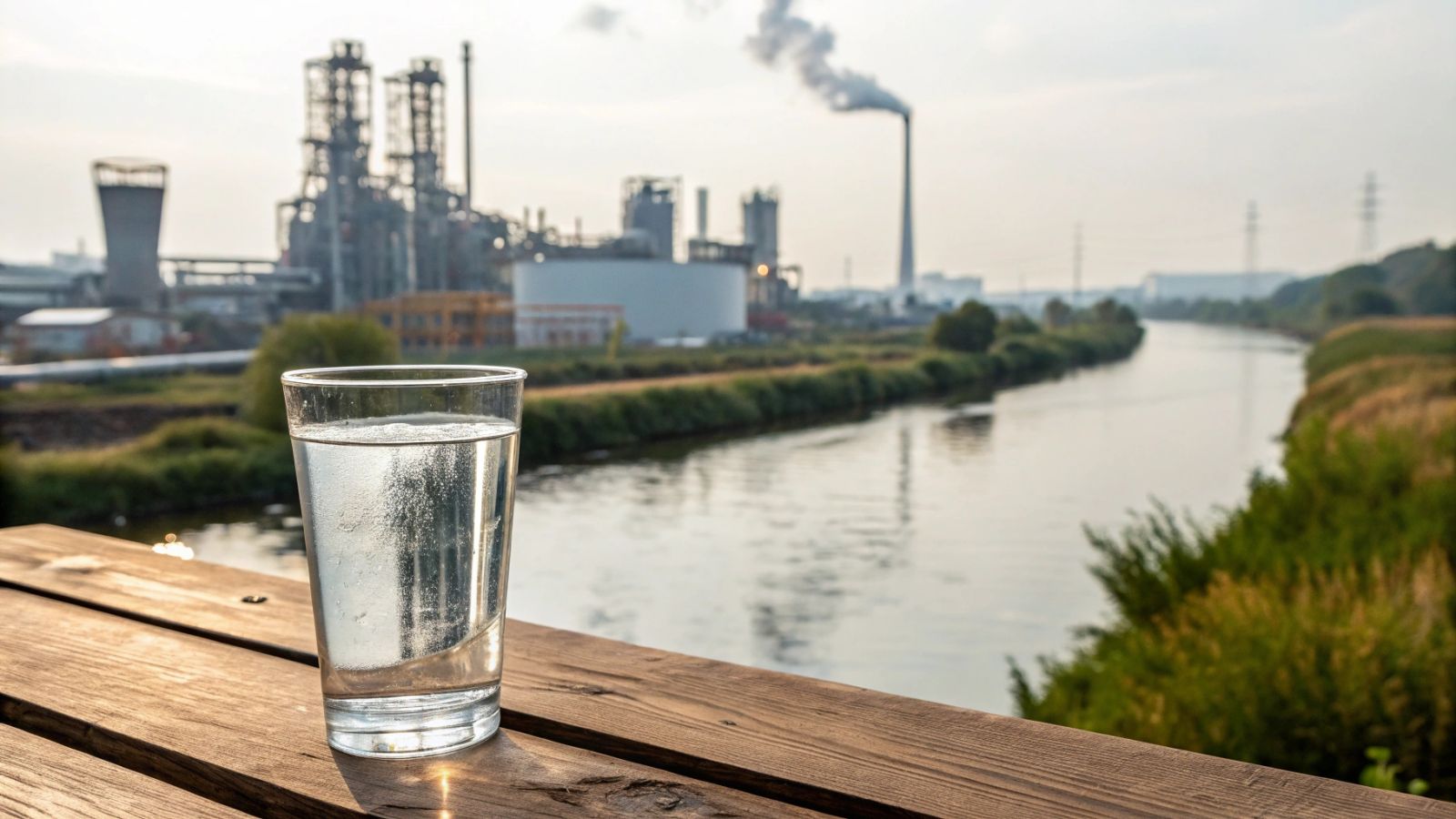Discovery of a concerning link between drinking water and cancer 🚨
Published by Cédric,
Article author: Cédric DEPOND
Source: Journal of Exposure Science & Environmental Epidemiology
Other Languages: FR, DE, ES, PT
Article author: Cédric DEPOND
Source: Journal of Exposure Science & Environmental Epidemiology
Other Languages: FR, DE, ES, PT
Follow us on Google News (click on ☆)
These substances, nicknamed "forever chemicals" due to their resistance to degradation, are ubiquitous in our environment. Used in many everyday products, they accumulate in soil, water, and even our bodies. A team of researchers has explored their impact on health, revealing concerning links with several types of cancer.

PFAS: a silent threat
PFAS, or per- and polyfluoroalkyl substances, are synthetic chemical compounds used for decades in industry. Their stability makes them extremely persistent in the environment, where they contaminate drinking water, soil, and food chains.
Present in packaging, textiles, or household products, these pollutants infiltrate water supplies. In the United States, nearly 45% of drinking water sources contain them, exposing millions of people to health risks that are still poorly understood.
An alarming link to cancer
The study, published in the Journal of Exposure Science & Environmental Epidemiology, analyzed water contamination data and cancer rates between 2016 and 2021. The results show an increase of up to 33% in certain cancers in the most contaminated areas.
Digestive, endocrine, and respiratory cancers are particularly affected. Men show an increased risk of urinary and brain cancers, while women are more affected by thyroid and soft tissue cancers.
Differential impacts by sex
Researchers observed significant variations between men and women. In men, PFAS seem to promote brain and kidney cancers. In women, the risks of thyroid and soft tissue cancers are higher.
These differences could be explained by distinct biological mechanisms related to hormonal disruptions caused by PFAS. However, further research is needed to confirm these hypotheses.
Insufficient regulation
Faced with these risks, U.S. authorities have announced measures to limit the presence of six types of PFAS in drinking water by 2029. However, scientists believe these actions remain too timid.
They call for increased monitoring of less-studied PFAS and the adoption of stricter standards. Reducing exposure to these substances remains a priority to protect public health and prevent new cancer cases.
Tap water vs. bottled water: which is safer?
Tap water, here singled out for its PFAS contamination, is not the only concern. Bottled water, perceived as a safer alternative, could also contain these "forever chemicals." Recent studies have detected traces of PFAS in some brands of bottled water, although levels vary significantly.
Regulations on PFAS in bottled water are less strict than for tap water. In the United States, for example, there is no specific federal standard for PFAS in bottled water. This means consumers cannot always be certain of the quality of the water they drink.
The limits of bottled water
While bottled water may seem purer, it is not without risks. PFAS can come from the water source itself or be introduced during the bottling process. Additionally, plastic bottles can release other contaminants, especially if exposed to heat.
Finally, bottled water poses major environmental problems, including plastic waste production. Faced with these challenges, improving tap water quality and strengthening PFAS regulations appear to be more sustainable and effective solutions for protecting public health.